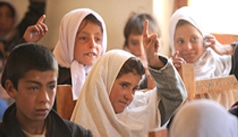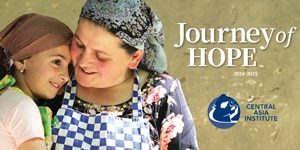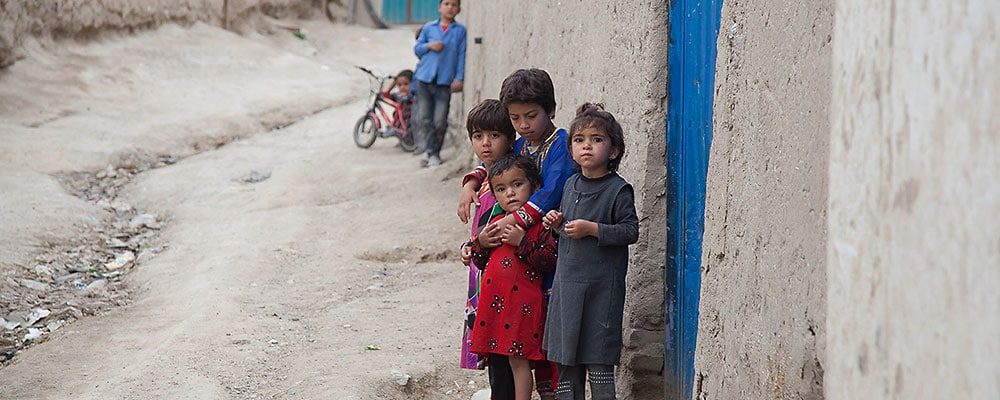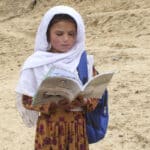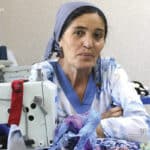World Refugee Day Takes on a Different Meaning For Afghan Children
June 20th is World Refugee Day, marked by the United Nations to commemorate the crises and hardships experienced by the 68.5 million displaced people around the world, more than half of whom are children.
For millions of Afghan children, displacement is a way of life. It is deeply woven into their country’s fabric by decades of war, recurrent disasters like droughts and floods, and now by shifting political winds that have led some countries to no longer welcome them.
At present, Afghanistan has among the highest number of displaced people in the world. An estimated 635,000 Afghans are internally displaced within the country due to the ongoing war. Though conflict and insecurity have contributed most to this number, recurrent drought, floods, and other extreme weather events have become more frequent and severe. According to the 2018 Humanitarian Response Plan, 3.9 million Afghans are facing emergency levels of food insecurity due to extreme drought.
Millions more have been forced to flee the country altogether and seek asylum abroad. Of the world’s 25.4 million refugees — those who are outside their country of origin — an estimated 2.6 million are Afghans. The only country in the world today that has seen more of its citizens flee is Syria. It’s important to reflect on these numbers, not just on World Refugee Day, but every day.
But the problem does not stop there. Despite the fact that the security situation within the country has deteriorated over the past few years, Afghan refugees living abroad increasingly have been under pressure to return home, even by countries that historically welcomed them. More than 834,000 Afghan refugees have returned to Afghanistan, despite the fact that most have no home to go back to. Many have spent decades living in neighboring countries like Pakistan and Iran; many were even born there. For this population of “returnees” finding secure access to shelter, food, jobs, education, or healthcare can be particularly challenging as they no longer have ties to the local communities and sometimes do not speak the same language.
Whether IDP, refugee, or returnee, the situation for Afghanistan’s displaced children is especially difficult. Alice Thomas, Central Asia Institute’s executive director, explains it this way: “What is so tragic is not only the extreme hardship that Afghanistan’s displaced children face each day in terms of lack of a safe, dry place to sleep or a meal, and exposure to physical violence and exploitation. It is also the fact that they are being denied the main tool they need to effectively lead their country out of crisis to a more peaceful future — an education.”
Access to Education is a Lifeline
In Afghanistan today, 4 million school-aged children — nearly one in two kids — have no access to an education. An entire generation is at risk of missing this essential stepping stone to healing their families, their country, and mitigating the risks they face every day.
For displaced children who are especially vulnerable, schools can offer a lifeline: a safe space where children can learn and thrive, thereby supporting their healthy development and overall wellbeing. Girls who receive an education are likely to have healthier, more prosperous families. They are less likely to be forced into early marriage or be subjected to gender-based violence. Boys who are educated also have better outcomes. They are more likely to get jobs and contribute to their family’s income, and less likely to be drawn to illegal armed groups. In short, for Afghan children — especially those who are displaced — access to education not only provides security in a hostile environment but also serves as a pathway out of poverty and the ongoing cycle of violence.
Unfortunately, in Afghanistan and elsewhere, education often is not prioritized. The vast majority of humanitarian aid received from foreign governments is allocated to emergency food and water, while emergency education remains woefully underfunded. In 2018, only 17 percent of funds requested for emergency education in Afghanistan were met, leaving more than an 80 percent gap.
“Often education is not seen as a lifesaving need,” says Thomas. “But it really is. If children are not in school, the risks to their health and safety are astronomical. School becomes that stable environment and a safe place to be.”
What Is Central Asia Institute Doing on World Refugee Day?
Since 2001, with the help of our generous supporters, Central Asia Institute has been implementing education and livelihood programs primarily in the northern and eastern parts of the country, provinces that are now among those hosting the largest numbers of displaced children. As the local population’s needs have shifted, Central Asia Institute has been adapting our programs to meet the specific needs of displaced children and their families.
Along with providing emergency tent schools and ensuring children have school supplies, Central Asia Institute is working with its local partner to adapt programs like Student Education Support Programs (SESP), vocational training, and literacy programs to fit the needs of displaced children.
“It’s long been our mission to support education in Afghanistan and surrounding countries,” says Thomas. “It’s now become increasingly important for us to support displaced children who are pouring into these communities. Because education is often underfunded by government donors during crises, it’s critical for organizations like Central Asia Institute to step in where we can and fill the educational needs of displaced children.”
Here at Central Asia Institute, World Refugee Day gives us an opportunity not just to stop and consider the situation of the millions of displaced children in Afghanistan and around the world, but also to stand in solidarity with them. We’re rooting for them. We’re banking on their potential to lead their country to a brighter future, and to healthier, more productive, and more peaceful lives. We hope you stand with us.
